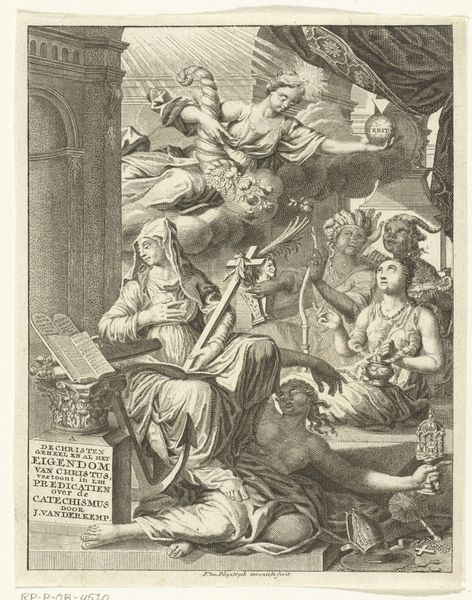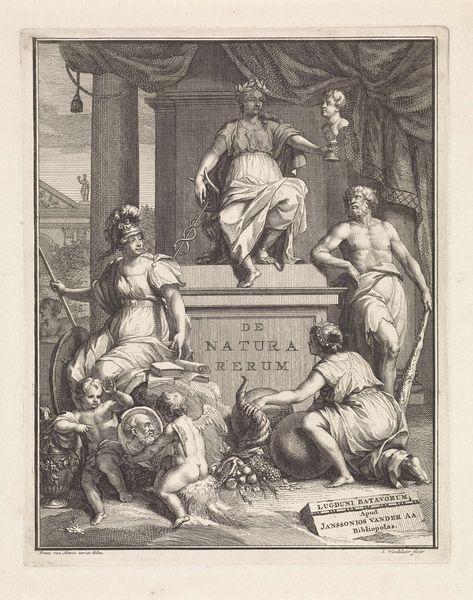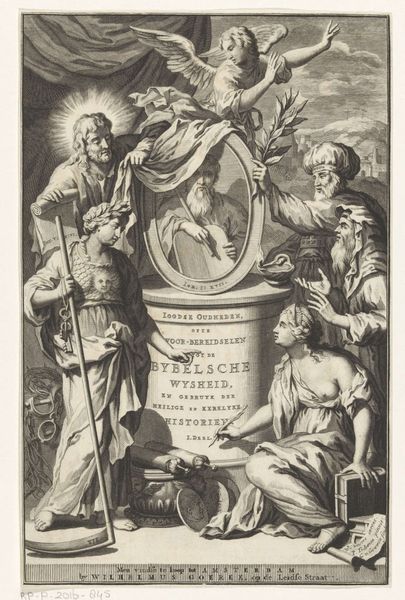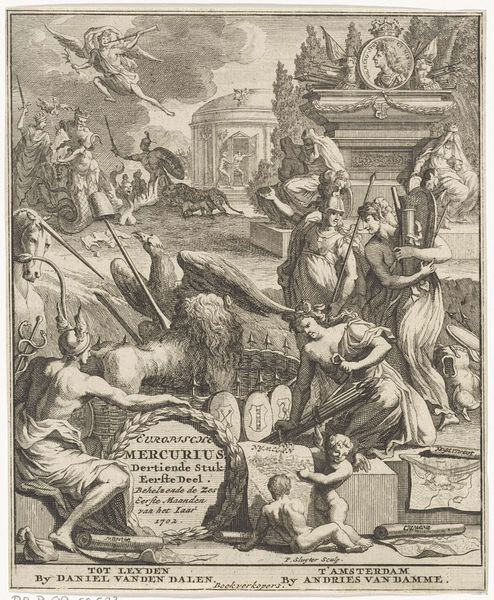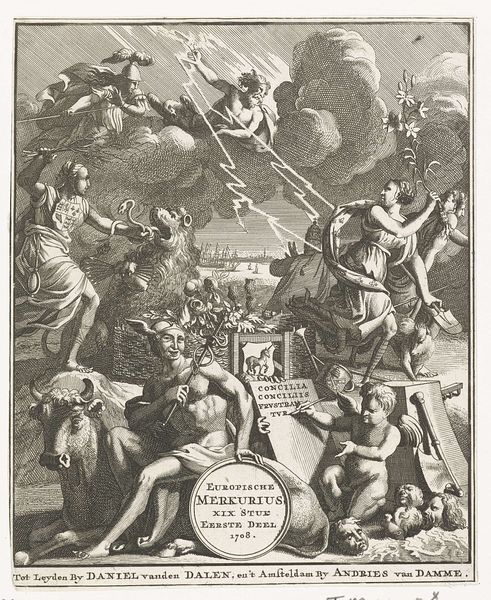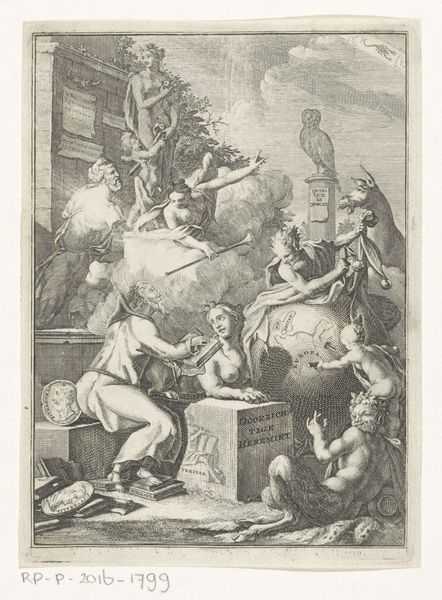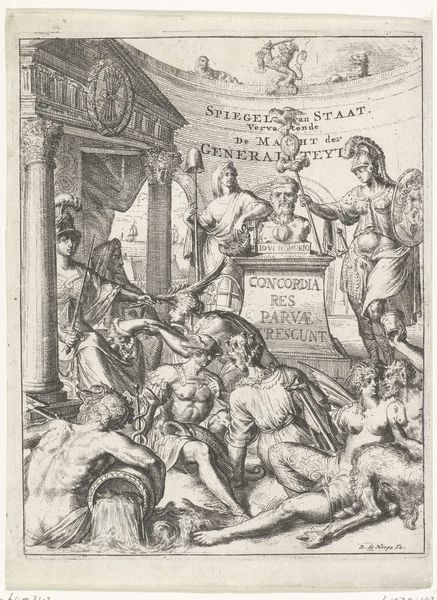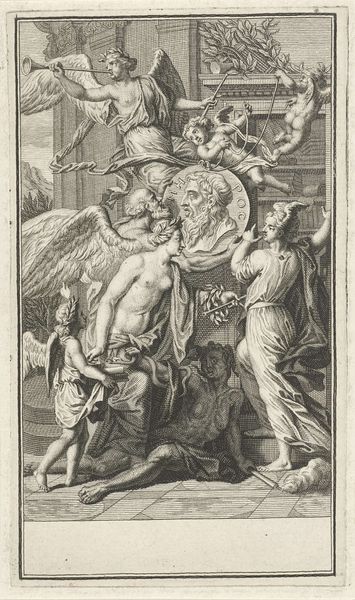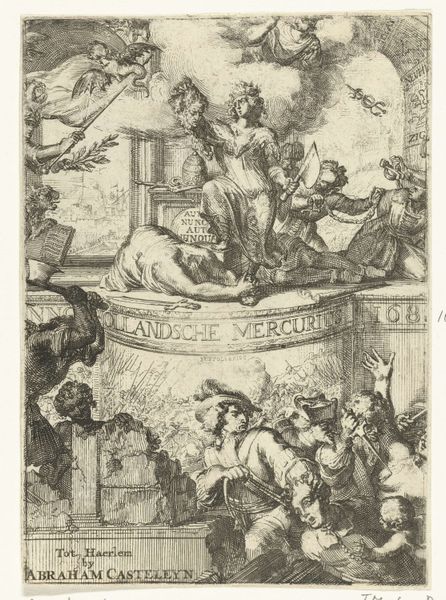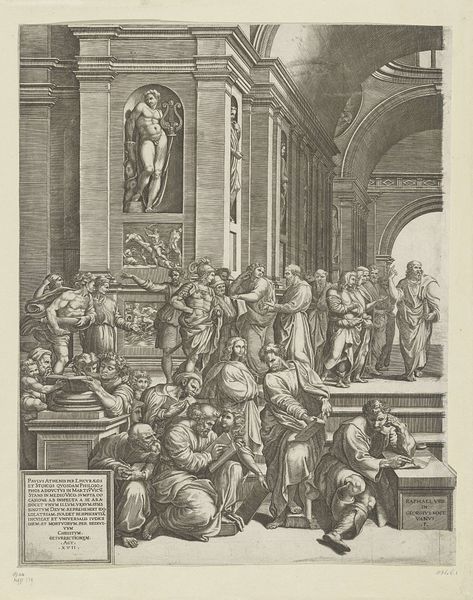
engraving
#
allegory
#
baroque
#
caricature
#
history-painting
#
engraving
Dimensions: height 370 mm, width 244 mm
Copyright: Rijks Museum: Open Domain
This allegorical representation of geography was made by Jan van Vianen, sometime between 1660 and 1726, using engraving. This process involves cutting lines into a metal plate, applying ink, and then using a press to transfer the image onto paper. The material of the print itself—paper and ink—belies the great labor that went into its making. The fine lines and intricate details speak to Van Vianen's skill as an engraver. Look closely at the textures and tones he achieves through subtle variations in line weight and density. Consider also the social context of this artwork. Printmaking in the 17th and 18th centuries was a vital industry, driven by the demand for images that could be widely disseminated. Engravers like Van Vianen were craftsmen, producing visual knowledge for an expanding market. So, next time you encounter a print, remember that it represents not only artistic vision, but also technical skill and a complex web of social and economic relations.
Comments
No comments
Be the first to comment and join the conversation on the ultimate creative platform.
